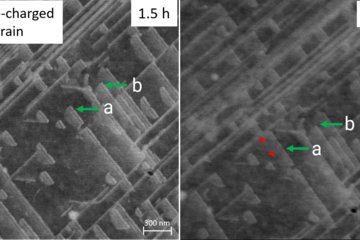All genres
21.
Poster
Ultrastructural Origins of Optical Properties in the Exoskeletons of Beetles. 2011 MRS Fall Meeting, Boston, MA, USA (2011)
22.
Poster
Structure of the 3D-Photonic Crystals in the Multi-Colored Scales of the Weevil Entimus imperialis (Curculionidae). Ninth International Conference on Photonic and Electromagnetic Crystal Structures (PECS-IX 2010), Granada, Spain (2010)
23.
Poster
Spectral and angular distribution of light scattered from the elytra of two carabid beetle species. First NanoCharm Workshop on Advanced Polarimetric Instrumentation, Ecole Polytechnique, Palaiseau Cedex, Palaiseau Cedex, France (2009)
24.
Thesis - PhD
Structure-property-relations of cuticular photonic crystals evolved by different beetle groups (Insecta, Coleoptera). Dissertation, RWTH-Aachen, Aachen, Germany (2014)











